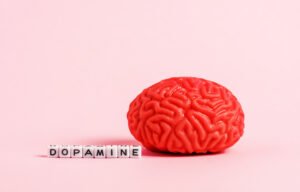Introduction
Welcome to a journey of discovery into the profound impact of habits on our lives. In this introductory chapter, we’ll lay the groundwork for understanding the significance of habits and delve into the science behind habit formation.
Understanding the Impact of Habits on Our Lives
Habits are the silent architects of our daily existence. They shape our actions, decisions, and ultimately, our destiny. Whether we’re aware of it or not, habits play a pivotal role in virtually every aspect of our lives, from our morning routines to our long-term goals.
Consider this: up to a staggering 70% of our daily behaviors are habitual. These automatic routines free up our cognitive resources, allowing us to focus on more complex tasks. However, they can also be a double-edged sword, potentially leading us astray if we’re not vigilant.
In this chapter, we’ll explore the profound ways in which habits influence our lives, from our personal growth to our professional success. We’ll uncover how habits are the cornerstone of consistency and how they can be harnessed to drive positive change.
The Science Behind Habit Formation
Habit formation is a fascinating journey into the inner workings of our brains. It’s not just about willpower or repetition; it’s about understanding the neurological processes that underpin our habits.
Here, we’ll embark on a scientific exploration of habit formation. We’ll demystify the concept of neural pathways and their role in making habits stick. We’ll unravel the mysteries of procedural memory, a fundamental aspect of habit formation that involves holding a specific sequence of actions in mind to achieve a particular outcome.
As we delve into the science behind habits, you’ll gain valuable insights into how your brain transforms a conscious action into an automatic routine. This knowledge will serve as the foundation for the practical strategies we’ll uncover in the subsequent chapters.
So, let’s begin this journey into the intriguing world of habits, where science meets self-improvement, and where understanding the “why” behind our habits empowers us to shape our destinies.
The Habit-Forming Process
Welcome to Chapter 2, where we delve into the fascinating world of the habit-forming process. Here, we’ll explore the varied timelines of habit formation and the crucial role of procedural memory in shaping our behaviors.
The Varied Timelines of Habit Formation
Debunking the Myth of the 21-Day Rule
Let’s start by debunking a common myth about habit formation—the infamous “21-day rule.” You’ve likely heard that it takes just 21 days to form a habit. Well, it turns out that this is a gross oversimplification. The reality is far more complex.
Habit formation isn’t a one-size-fits-all journey. Research has shown that the time it takes to solidify a habit can vary widely from person to person and from habit to habit. We’ll uncover the factors that influence the duration of habit formation and why the 21-day rule falls short of the truth.
Factors Affecting Habit Formation Duration
Habit formation isn’t solely about counting days. Several factors come into play, affecting how long it takes for a habit to become ingrained. We’ll explore these factors, including the complexity of the habit, your individual personality traits, and the surrounding environment. Understanding these elements is essential for anyone striving to cultivate lasting habits.
Procedural Memory: The Key to Habit Formation
What Is Procedural Memory?
Now that we’ve unraveled the mystery of habit formation timelines, let’s turn our attention to the powerhouse behind the process—procedural memory. But what exactly is procedural memory?
Procedural memory is a specific type of long-term memory responsible for encoding and storing the sequence of actions required to perform a particular task or habit. It’s like your brain’s instruction manual for routine activities, from tying your shoelaces to brewing your morning coffee. Understanding how procedural memory functions is pivotal to grasping how habits take root in your brain.
How Procedural Memory Influences Habits
Procedural memory doesn’t just passively store information; it actively shapes your behaviors. In this section, we’ll explore how procedural memory influences the formation of habits. You’ll learn how your brain transforms a conscious action into an automatic, almost reflexive behavior through the power of procedural memory.
As we unravel the intricacies of procedural memory’s role in habit formation, you’ll gain insights into how to leverage this knowledge to your advantage when working to cultivate new, positive habits.
So, fasten your seatbelts as we navigate the complex terrain of habit formation timelines and dive deep into the neurological wonders of procedural memory. Understanding these aspects is the first step towards mastering the art of habit formation.
The Power of Visualization
Welcome to Chapter 3, where we delve into the transformative power of visualization and how it can propel you towards habit success. Visualization is not just daydreaming; it’s a scientifically proven technique that can reshape your habits and drive you closer to your goals.
Visualizing Your Way to Habit Success
The Role of Mental Imagery
At the core of effective visualization lies the ability to create vivid mental imagery. This technique harnesses the mind’s incredible capacity to simulate experiences, which can be instrumental in habit formation. By understanding the role of mental imagery, you can unlock the potential to shape your behaviors consciously.
Visualizing your desired habits in intricate detail can activate neural pathways associated with those actions. We’ll explore how this process works and why it’s a powerful tool for habit enthusiasts.
Techniques for Effective Visualization
Effective visualization requires more than simply daydreaming about your goals. In this section, we’ll equip you with a toolbox of techniques to enhance your visualization skills. From guided imagery to multisensory visualization, we’ll delve into various methods you can employ to make your mental rehearsals as vivid and impactful as possible.
Case Studies: Real-Life Examples of Visualization Success Stories
Athletes and Visualization
Athletes have long recognized the power of visualization in achieving peak performance. In this section, we’ll explore real-life examples of athletes who have used visualization to enhance their skills, conquer challenges, and clinch victories. Whether you’re an aspiring athlete or simply aiming to hone your habits, their stories will inspire you to leverage visualization in your journey.
Entrepreneurs and Goal Visualization
Visualization isn’t limited to the sports arena; it extends to the world of business and entrepreneurship. We’ll examine how successful entrepreneurs have harnessed the art of goal visualization to drive innovation, make strategic decisions, and build thriving enterprises. Their experiences will demonstrate the versatile applications of visualization in various aspects of life.
As we embark on this exploration of visualization’s profound impact on habit formation, you’ll gain insights into how to harness your mental imagery to propel you toward your desired habits and accomplishments. So, let’s venture into the realm of visualization and unlock your potential for habit success.
Task Bracketing: The Habit-Shaping Technique
Welcome to Chapter 4, where we unravel the enigmatic realm of task bracketing—a technique that can be your guiding light in habit formation. Task bracketing, nestled deep within our neural circuits, plays a pivotal role in molding habits and making them resilient to the winds of change.
Demystifying Task Bracketing
Understanding the Basal Ganglia
Our journey into task bracketing commences with an exploration of the basal ganglia, a cluster of nuclei nestled within the brain. This neurological marvel serves as the epicenter for habit-related activities. In this section, we’ll decode the intricacies of the basal ganglia and its role in habit formation. You’ll gain a profound understanding of the brain’s architecture dedicated to habit shaping.
Go and No-Go Circuits: A Neural Perspective
Within the basal ganglia, the interplay between Go and No-Go circuits orchestrates the symphony of habit formation. As we dissect this neural perspective, you’ll uncover how these circuits collaborate to lay the foundation for habitual behaviors. This knowledge will empower you to take control of your habits by leveraging the science behind task bracketing.
Making Habits Stick with Task Bracketing
Context-Independent Habits
One of the superpowers bestowed upon us by task bracketing is the ability to create context-independent habits. In this section, we’ll delve into the significance of this phenomenon. You’ll learn how task bracketing sets a neural imprint that transcends environmental variations, making your habits more robust and less susceptible to external disruptions.
Building Resilience Through Task Bracketing
Resilience is the hallmark of enduring habits. Task bracketing equips you with the tools to infuse your habits with unwavering strength. We’ll explore practical strategies for building resilience through task bracketing, ensuring that your habits stand the test of time and adversity.
As we journey through the intricacies of task bracketing, you’ll gain profound insights into the neural underpinnings of habit formation. Armed with this knowledge, you’ll be better prepared to craft habits that withstand the trials of daily life and propel you toward positive change.
Anticipation and Reward: The Psychology of Habit
In Chapter 5, we delve into the fascinating world of anticipation and reward, unraveling the intricate psychology behind habit formation. You’ll discover how these psychological elements influence the habits we develop and how to harness them for positive change.
The Role of Anticipation in Habit Formation
Dopamine and Habit Anticipation
Anticipation is the ignition switch for many of our daily habits, and dopamine is the spark that sets it in motion. In this section, we explore how dopamine, often referred to as the “feel-good” neurotransmitter, plays a pivotal role in habit anticipation. Understanding the dopamine-driven anticipation phase can provide valuable insights into why we form certain habits and how we can manipulate this process for beneficial outcomes.
Navigating the Anticipation Phase
Anticipation isn’t a passive process; it’s a dynamic mental state that propels us towards our habits. Here, we discuss how individuals can navigate the anticipation phase effectively. You’ll learn practical strategies to manage your anticipation, ensuring that your habits align with your goals and aspirations.
Rewarding the Habit Loop
Intrinsic vs. Extrinsic Rewards
Rewards are the currency of habit reinforcement, and they come in two distinct forms: intrinsic and extrinsic. In this section, we differentiate between these two types of rewards and uncover the unique role each plays in sustaining habits. Understanding the nuances of intrinsic and extrinsic rewards can empower you to design an effective system for habit reinforcement.
Designing a Reward System for Habit Reinforcement
The art of habit formation lies in crafting a reward system that fuels your motivation and commitment. Here, we delve into the practical aspects of designing a personalized reward system. You’ll gain valuable insights into how to structure rewards that align with your objectives, ensuring that your habits become ingrained in your daily routine.
As we journey through Chapter 5, you’ll gain a profound understanding of the psychology behind habit formation, including the pivotal roles of anticipation and rewards. Armed with this knowledge, you’ll be equipped to navigate the intricate landscape of habit development and leverage these psychological mechanisms to your advantage.
Breaking Bad Habits: The Art of Replacement
In this chapter, we dive deep into the complex world of breaking bad habits and replacing them with positive alternatives. Breaking free from the clutches of detrimental behaviors requires a nuanced understanding of the neural circuitry that underlies them.
Understanding the Neural Circuitry of Bad Habits
Identifying the Triggers
The first step in conquering bad habits is recognizing the triggers that set them in motion. In this section, we explore the science behind habit triggers and how they become ingrained in our daily routines. Armed with this knowledge, you’ll be better equipped to identify the specific cues that lead to undesirable behaviors.
The Role of Neural Pathways
Our brains are wired to follow familiar pathways, including those associated with bad habits. This section delves into the role of neural pathways in habit formation and how they contribute to the persistence of negative behaviors. Understanding these neural mechanisms is crucial for successfully breaking free from the grip of bad habits.
The Power of Immediate Replacement
Creating a Positive Temporal Mismatch
One effective strategy for breaking bad habits is to create a temporal mismatch between the trigger and the habit itself. We explore how introducing a delay or replacing the habit with a positive alternative can disrupt the neural circuitry responsible for bad habits. This technique can be a game-changer for those looking to overcome destructive behaviors.
Shifting from Bad to Good Habits
Replacing bad habits with good ones requires a deliberate and systematic approach. In this section, we provide actionable steps for shifting from detrimental behaviors to positive habits. You’ll discover how to rewire your brain to embrace healthier alternatives and build a lifestyle that aligns with your goals.
By the end of this chapter, you’ll have a comprehensive understanding of how bad habits form, the neural processes involved, and effective techniques for breaking free from them. Armed with this knowledge, you’ll be prepared to embark on your journey towards positive change and habit transformation.
Conclusion
In this final chapter, we bring together the key insights and strategies discussed throughout this exploration of habit formation. It’s time to harness the science of habit formation and craft your path to positive change.
Harnessing the Science of Habit Formation
In the journey of habit formation, understanding the underlying science is the first step towards mastery. We’ve uncovered the myths surrounding habit timelines, dived deep into procedural memory, harnessed the power of visualization, demystified task bracketing, explored the psychology of anticipation and reward, and learned the art of replacing bad habits. Now, it’s time to consolidate this knowledge and put it into action.
Crafting Your Path to Positive Change
Practical Steps for Habit Building
Building positive habits is not just a theoretical exercise; it’s a practical endeavor. In this section, we provide you with a step-by-step guide on how to initiate and maintain habits that align with your goals. From setting SMART (Specific, Measurable, Achievable, Relevant, Time-bound) objectives to tracking your progress, we offer actionable advice to kickstart your habit-building journey.
Maintaining a Habit-Driven Lifestyle
Habit formation is not a one-time task; it’s a lifelong commitment. In this final section, we discuss strategies to ensure the longevity of your habit-driven lifestyle. We delve into the importance of consistency, accountability, and continuous learning to help you stay on track and make lasting positive changes in your life.
As you conclude this comprehensive exploration of habit formation, remember that the power to transform your life lies within you. Armed with the knowledge and strategies you’ve acquired in this article, you have the tools to cultivate habits that can shape a brighter and more fulfilling future.
The journey of habit formation is ongoing, and it’s time for you to take the first step. Start small, stay consistent, and watch as your positive habits pave the way for a life of achievement, well-being, and personal growth. Thank you for joining us on this enlightening journey, and may your path to positive change be filled with success and fulfillment.









